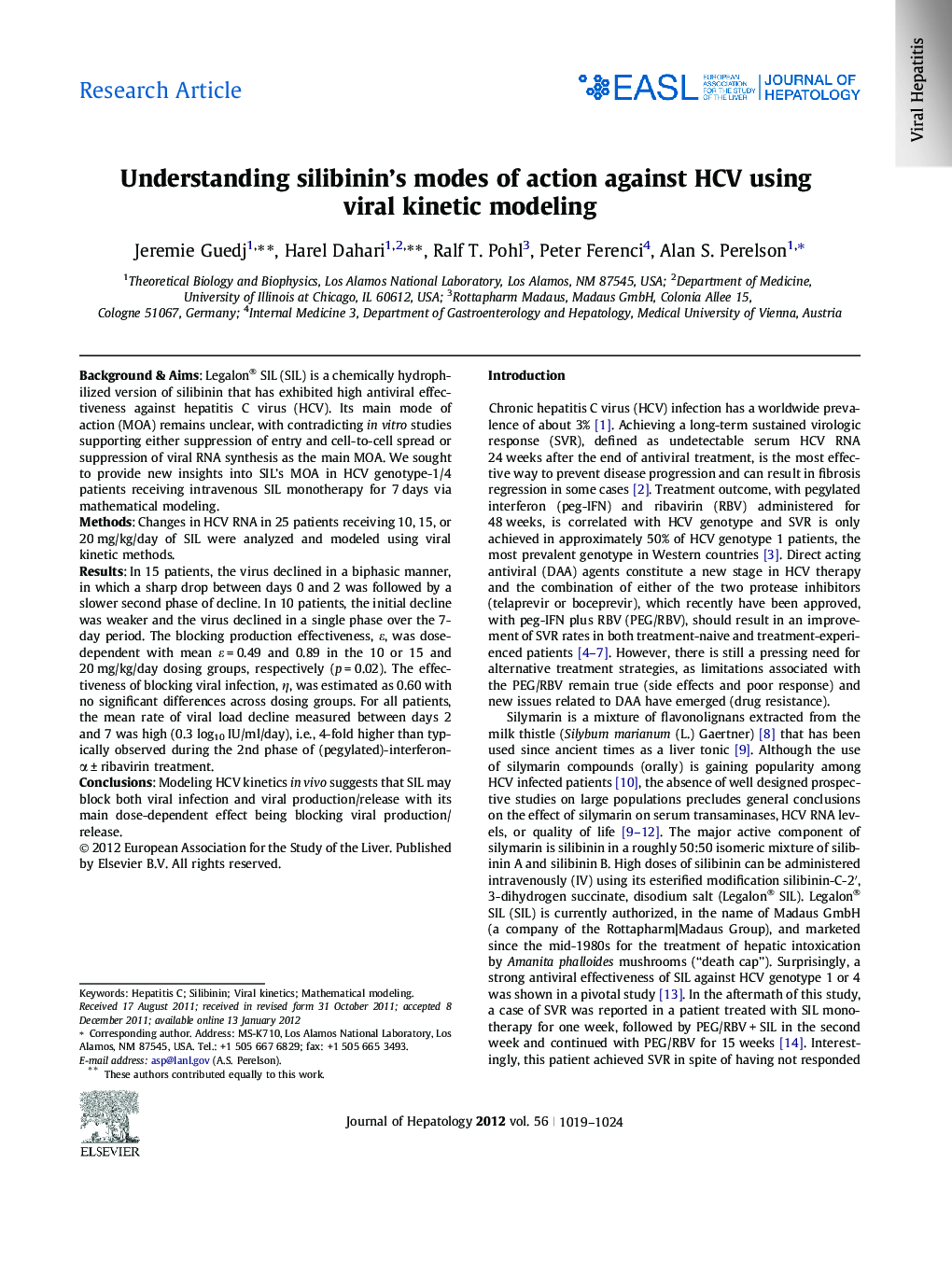| Article ID | Journal | Published Year | Pages | File Type |
|---|---|---|---|---|
| 6104511 | Journal of Hepatology | 2012 | 6 Pages |
Background & AimsLegalon® SIL (SIL) is a chemically hydrophilized version of silibinin that has exhibited high antiviral effectiveness against hepatitis C virus (HCV). Its main mode of action (MOA) remains unclear, with contradicting in vitro studies supporting either suppression of entry and cell-to-cell spread or suppression of viral RNA synthesis as the main MOA. We sought to provide new insights into SIL's MOA in HCV genotype-1/4 patients receiving intravenous SIL monotherapy for 7 days via mathematical modeling.MethodsChanges in HCV RNA in 25 patients receiving 10, 15, or 20 mg/kg/day of SIL were analyzed and modeled using viral kinetic methods.ResultsIn 15 patients, the virus declined in a biphasic manner, in which a sharp drop between days 0 and 2 was followed by a slower second phase of decline. In 10 patients, the initial decline was weaker and the virus declined in a single phase over the 7-day period. The blocking production effectiveness, ε, was dose-dependent with mean ε = 0.49 and 0.89 in the 10 or 15 and 20 mg/kg/day dosing groups, respectively (p = 0.02). The effectiveness of blocking viral infection, η, was estimated as 0.60 with no significant differences across dosing groups. For all patients, the mean rate of viral load decline measured between days 2 and 7 was high (0.3 log10 IU/ml/day), i.e., 4-fold higher than typically observed during the 2nd phase of (pegylated)-interferon-α ± ribavirin treatment.ConclusionsModeling HCV kinetics in vivo suggests that SIL may block both viral infection and viral production/release with its main dose-dependent effect being blocking viral production/release.
